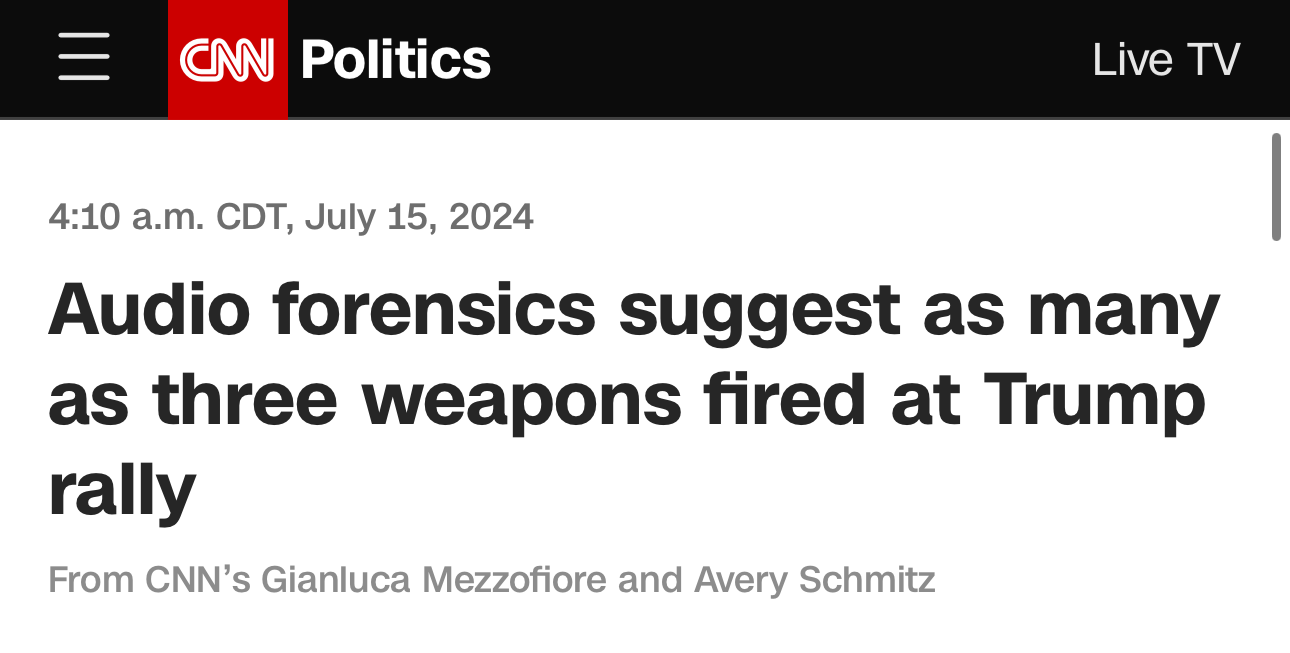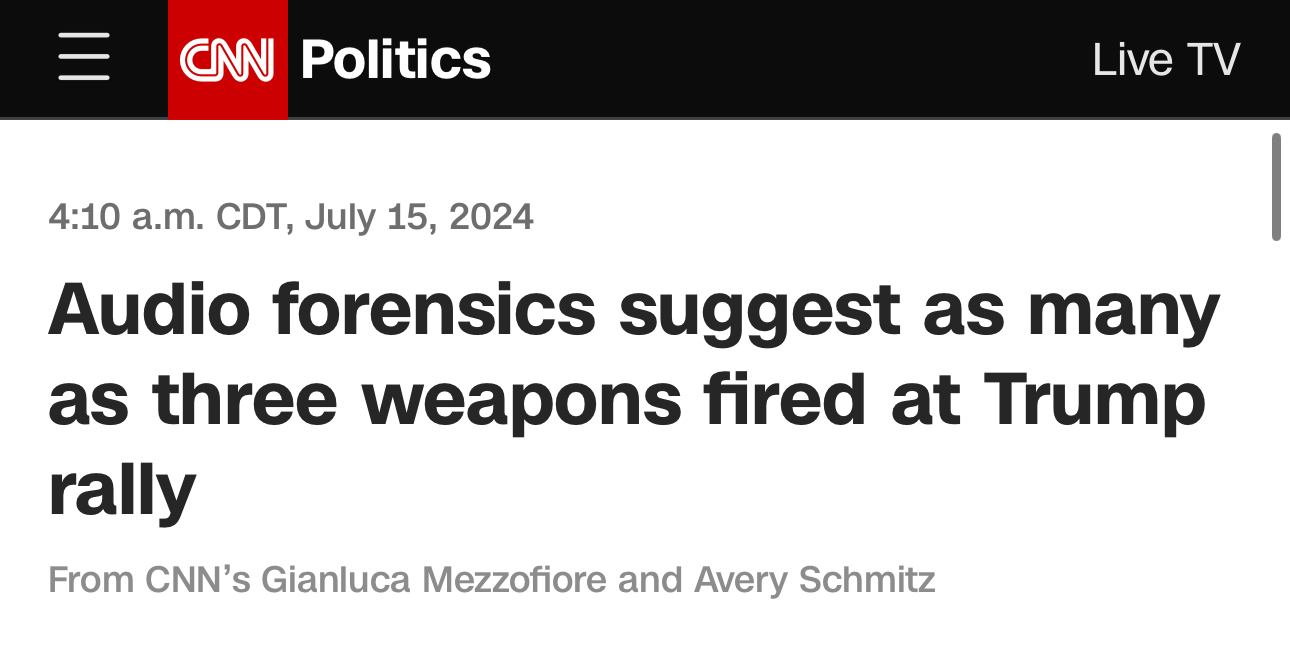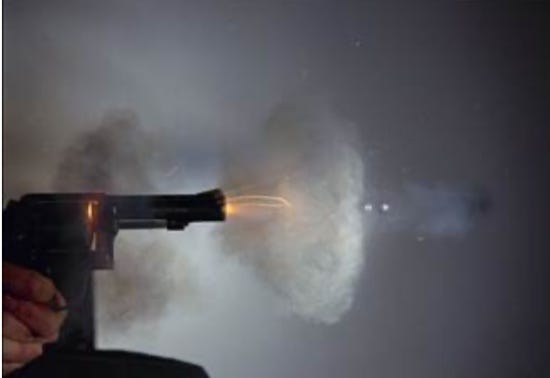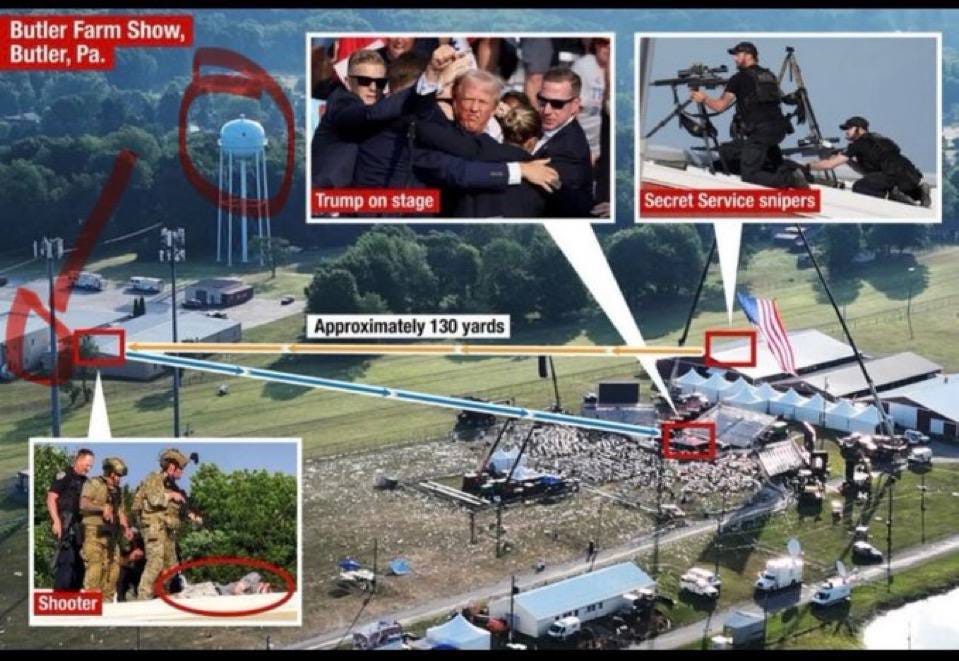THREE SHOOTERS: Reported by CNN with Audio Forensics and Experts Saying Three Different Weapons were Fired at Trump
"Acoustic impulse" was the Third Shot, per Catalin Grigoras, Director of the National Center for Media Forensics at the Univ. of CO, Denver and Cole Whitecotton, Senior Professional Research Associate
Four days ago, CNN reported expert analysis suggesting there may have been three shooters.
From CNN
You know it's pretty bad when CNN reports something different than their counterparts in mainstream news.
Audio forensic analysis suggest as many as three weapons were fired at Trump rally - CNN
The first three shots were consistent with alleged weapon A, the next five were consistent with alleged weapon B, and the final “acoustic impulse” was emitted by a possible weapon C, per audio analysis by Catalin Grigoras, director of the National Center for Media Forensics at the University of Colorado in Denver, and Cole Whitecotton, Senior Professional Research Associate at the same institution.
Audio analysis has also confirmed that the gunman was about 360 to 393 feet from the podium, according to forensics expert Robert Maher.
This conclusion aligns with CNN’s analysis that the gunman was on a rooftop 393 to 492 feet from the podium when shots rang out.
The shots exemplify a “crack-pop” sequence, typical when a supersonic bullet passes a microphone, before the “arrival of the corresponding muzzle blast sound,” Maher, who teaches audio forensics at Montana State University, told CNN.
The time between these markers places the shooter 110 to 120 meters from the microphone, Maher said, assuming the bullet is moving at an average speed of 800 to 1,000 meters per second, the equivalent of 2,600 to 3,280 feet per second.
CNN’s Hannah Rabinowitz, Evan Perez, and Ryan Young contributed reporting.
Source: https://www.cnn.com/politics/live-news/trump-rally-shooting-07-14-24/index.html
“Acoustic Impulse”
Here is a Presentation on Acoustic Impulses Caused by Gunshots
Steven D. Beck – steve.beck@baesystems.com
BAE Systems
6500 Tracor Ln. MS 27-16
Austin, TX 78725Hirotaka Nakasone - Hirotaka.Nakasone@ic.fbi.gov
Kenneth W. Marr - Kenneth.Marr@ic.fbi.gov
FBI
ERF-E Bldg 27958A
Quantico, VA 22135Popular version of paper 4aSCa3
Presented Thursday morning, November 3, 2011
162nd ASA Meeting, San Diego, Calif.Most people are familiar with the bang or crack sounds generated by firearms. These sounds are loud, short in duration, and are generally distinguishable from other sounds in the environment. Gunshots are commonly heard during military events, hunting, and around firing ranges. They are also commonly associated with violent crime scenes, and due to the proliferation of handheld audio recording devices and cell phones, more gunshot sounds are becoming available to law enforcement for forensic analysis. Forensic audio recordings are usually made with a single microphone, are poor-to-medium quality, and contain significant interference (voices, yelling, screaming, etc). This is in contrast to specialized acoustic event locating systems used by the military and law enforcement, which are not addressed in this paper. The forensic audio analyst must work with whatever signals are recorded, often having little information about the firearms or the recording environment, and must try to answer questions that are often asked in trial situations, like:
Is any particular audio event a gunshot?
How many firearms were used?
Who fired first?
Gunshot recordings submitted for forensic analysis are usually made in less than ideal conditions. In order to make sense of these recordings, analysts need to understand the underlying acoustics of impulse sounds, and then know what variations can occur and how the recording conditions can affect the signals. The FBI has conducted a number of acoustic gunshot studies using many different types and models of firearms, high quality recording equipment, and multiple and different microphone placements relative to the firearm (range and azimuth angle), as shown in Figure 1.
The experiments were carefully controlled and made in both pristine and more realistic recording conditions. Examination of the waveforms showed that the pristine recordings match closely with theoretical models, but there were a number of unexpected findings. Waveforms recorded under more realistic conditions can vary significantly - even to the point of being unrecognizable and forensically unusable.
Figure 1. Picture and diagram of the firing location and placement of four microphone stations. In this configuration, the microphones were placed at a distance of 3 m and at angles of 3, 30, 60, and 90 degrees to the line of fire. Other configurations were also studied including multiple forward and back angles at different distances, and multiple distances at the 3 and then the 90 degree angles.
Gunshot sounds are composed of one or more discrete acoustic transient events. The two primary acoustic events are the muzzle blast (bang) and the ballistic shockwave (crack). Muzzle blasts are extremely high intensity acoustic waves (many times louder than a jet engine) that last only for a few milliseconds. In a pristine environment, muzzle blasts sound like a short pop, but in more realistic environments, the sound would be a loud bang with reverberation lasting over a second. Analysis shows that the waveform characteristics of the muzzle blast depend on the source generating mechanisms and vary according to the firearm make, model, barrel length, and the specific ammunition characteristics. Surprisingly, the muzzle blast is not a single isotropic (uniformly expanding) blast, but is composed of multiple gas bursts from different parts of the firearm, each of which are highly directional as shown in Figure 2.
Figure 2. High speed photograph of a gunshot acoustic event from firing a revolver. This photograph clearly shows the gas cloud escaping from the cylinder (only seen at recording angles greater than about 60 degrees from the line of fire), the gas cloud from the muzzle blast, and the gas particulates that are pushed out in front of the bullet (only seen in recordings at very close range and in the forward direction).The ballistic shockwave, or crack, is a separate acoustic event produced by a bullet traveling at supersonic speeds. Similar to the shockwave from a supersonic jet, the ballistic shockwave forms a cone trailing behind the bullet. The sound of the shockwave is only heard when the cone crosses the sensor, and is not heard at angles greater than 90 degrees to the line of fire. The magnitude and duration of the shockwave depend on the speed (Mach number), the size of the bullet, and the miss distance to the microphone. Figure 3 illustrates how the muzzle blast and ballistic shockwave waveforms depend on the microphone location relative to the line of fire.
Our experiments under pristine conditions have shown that the shape of a gunshot waveform depends on the firearm, the ammunition, and the microphone location (range and angle relative to the line of fire). Studies of gunshot recordings from less ideal conditions show significant waveform distortions resulting from reverberation (echoes) and from the recording system itself. Especially in urban settings, acoustic gunshot reverberation occurs from pavement, vehicles, buildings, and walls – creating a more familiar gunshot sound lasting seconds. The primary ground reflection can actually interfere with the main pulse of the muzzle blast, severely distorting its shape at longer recording distances. The recording system can also dramatically alter the shape of a gunshot waveform. High pass filters on the front end of the recording system can change the shape of the muzzle blast, and low pass filters can alter the shape of or even eliminate the ballistic shockwave. Extremely loud gunshot sounds (or recordings made at very close range) can exceed the distortion limits of the recorder and saturate the microphone or electronics, rendering the signal useless.
Figure 3. Different waveform responses from simultaneous recordings of a single gunshot using microphones at a constant distance but at different angles from the line of fire. The microphone at location a) is approximately 90 degrees to the line of fire and records the blast from high pressure gas escaping the cylinder, followed by the muzzle blast. The microphone at b) is approximately at 30 degrees to the line of fire and only shows the muzzle blast.
Finally, the microphone at 3 degrees to the line of fire shows the ballistic shockwave followed by the muzzle blast.
There are many variables that can affect recorded gunshot signals, and forensic audio analysts need to be aware of their influence on the resulting waveforms. Currently, analysts use simple blast waveform models and cross correlation techniques to study acoustic gunshot waveforms and try to answer basic forensic questions. Additional forensic testing is needed, along with more research into better models and analysis techniques, in order to extract useful information about gunshots from realistic recording conditions. Most of the information in this article and the figures are from J. Acoust. Soc. Am. 129, 1748-1759 (2011).Source: https://acoustics.org/pressroom/httpdocs/162nd/Beck_4aSCa3.html
In other words, forensics experts can figure out the balistics of each type of gun, which leaves its own fingerprints.
But wait!
In all fairness for skeptics, “Check your Facts” says that CNN denied this claim in an email to them:
“A spokesperson for CNN confirmed the post was “inaccurate” in an email to Check Your Fact.”
But they did not show us a copy of the email...
Source: https://checkyourfact.com/2024/07/16/fact-check-did-cnn-report-trump-was-shot-with-three-weapons-at-rally/
… And CNN has not retracted or added any addendum to their original story, which cited two forensics experts.
This is what we have:
And I am assuming that no Secret Service shot back at the man on the water tower, and that we don't know who he is.
❤️ Let me know if you hear anything more. I love that several of my readers are reaching out as my eyes and ears:) 🙌 Thank you! 🙏 ❤️












Scary when CNN brings a story not in line w narrative. I heard this on Sunday I think but no one
Mentioned it on the post I’ve read. 8 shots on video
Some say 11 some must be SS firing at Crooks.
Well this even makes this miracle more so and debunks the people claiming it’s all fake.
It sure would be nice to know the operation on Trumps ear.
Also how could Crooks 20 something have no social media account …
And why so few talking about more gunman?
It's a major screw up! Somebody's floating in the river,
https://x.com/chrismartenson/status/1814114895065141491